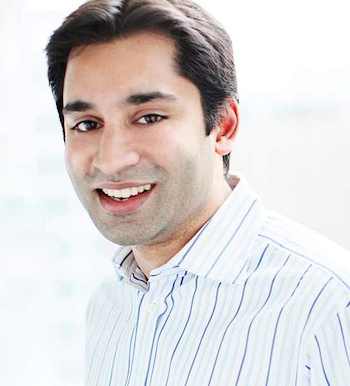 Google Ventures, the early-stage investment arm of Google, has invested about 30 percent of its fund into health startups, according to Krishna Yeshwant, one of its general partners. The fund receives $300 million a year from its parent company. Yeshwant, who is also a practicing physician, discussed Google Ventures' digital health investments at the HxRefactored 2015 event in Boston this week.
Google Ventures, the early-stage investment arm of Google, has invested about 30 percent of its fund into health startups, according to Krishna Yeshwant, one of its general partners. The fund receives $300 million a year from its parent company. Yeshwant, who is also a practicing physician, discussed Google Ventures' digital health investments at the HxRefactored 2015 event in Boston this week.
Some of the healthcare-specific startups Google Ventures has invested in include FitStar, the video workout app recently acquired by Fitbit, video visits service Doctor On Demand, healthcare provider One Medical Group, and asynchronous telemedicine service Spruce.
One way Yeshwant analyzes health startups is by determining what kinds of patients they are likely to help. During his talk at the event, he shared one way to categorize a patient population using four quadrants divided along two axes: their medical complexity and their social complexity, which includes the patient's socio-economic issues and their social support system.
"At one corner you have low social, low medical complexity, and that’s basically like everybody I work with at Google: the Googler population," he said. "They have a good job. They have insurance. They are usually not alcoholic. At the other end of the spectrum, the high social, high medical complexity patient population is largely beset by any number of social issues: homeless, oftentimes severe psychiatric illness, enough so that they’ve alienated most family members. They don’t have a lot of social support around them. Combined with profound medical comorbidity, because if you can’t figure out how to transfer yourself to the hospital, you miss most of your appointments, all of these things get worse."
In the middle, there are patients with low social complexity and high medical complexity, like "the Google employee who develops cancer", but 90 percent of a physician's visit volume ends up being people with high social complexity and low medical complexity.
"The reason I think this is an interesting model, as naive as it is, is right now we treat all four of those boxes using essentially the same product, or the same service," Yeshwant said. "...Each group values something quite different. The Googler -- that person has a job they are super into. They have a family. They often have kids. They’re exercising, have 10 different hobbies, and the idea of going to the doctor is so low on their priority list. They would pay to not go to the doctor. If they could just tweet back and forth with the doctor, they might be into that."
He adds that patients at the other end of the spectrum, which he sees at his practice, need very different tools to keep them healthy. Unlike the low medical complexity and low social complexity patients, these patients don't have some of the same resources, like access to internet.
"Once a week, twice a week, an engineer from Google shows up in my office saying they want to do something in healthcare," Yeshwant said. "They have read articles, they get that, 'Look there’s 20 percent of the patient population that’s 80 percent of our costs -- what do we do for that group?'. That 20 percent of people. They are not the same person as you. They are different. You’re not going to come up with an app that fixes their diabetes. I would love nothing more than for that to not be the case. They just don’t have a phone — that’s the only place in my life where I see people who have flip phones or no phones."
Yeshwant said that in the future, this could change, and more of this population will have access to phones that support apps. But for now, provider groups like One Medical, which are testing out specialized care on the high end of the market, are a good investment because he thinks it's easier to test these services with more high tech patients first.
There are other health technology companies, though, that Yeshwant said he is still hesitant to invest in, like those offering electronic medical records.
"I’m firm believer that we are moving into a value based, capitated world of some sort," he said. "It’s not the majority of the market today. It’s obviously growing. The major investment risk I see there is actually who gets elected as president next. And as much as I would like to believe that the horse is out of the barn — I believe to some degree that is the case -- but it’s not that hard to hobble it. If we have a president who is elected on the mandate of repealing or dismantling Obamacare and really feels like that’s their job, is that really impossible for them to do? It doesn’t seem to be at that stage. I would like us to be at that stage. As an investor, that’s the thesis that I’m investing heavily along. At the same time I’m putting large dollars into ones where I feel like there’s a story for them today but they are dramatically benefited as we shift into this new world... I personally don’t want to expose Google Ventures to that sort of risk just yet."












